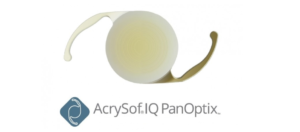Vision correction surgery is a popular alternative to traditional glasses and contacts. LASIK and other laser correction procedures can correct common refractive errors.
These include nearsightedness, farsightedness, and astigmatism, eliminating the need for corrective lenses. But what if you suffer from age-related vision problems, like presbyopia?
Presbyopia makes it harder to focus up close, often necessitating reading glasses. But there is a vision correction procedure specifically designed for presbyopia called Refractive Lens Exchange, or RLE.
RLE replaces the natural lens in your eye with an artificial one (called an intraocular lens) designed to help with presbyopia. Having RLE can undoubtedly reduce your need for reading glasses.
It may eliminate your need to use them entirely. However, it isn’t guaranteed to do the latter. When getting RLE, several factors to consider can make it more likely that you won’t need reading glasses.
It’s helpful to understand what RLE is, how it works, and what kind of artificial lenses you can choose from to understand those factors. Keep reading to find out if you can say goodbye to reading glasses after refractive lens exchange!
How RLE Works

RLE is an outpatient procedure. You’ll be awake during it, but if you’re nervous, your surgeon may give you a mild sedative to calm your nerves. You won’t feel any pain thanks to receiving numbing eye drops. You may feel slight pressure, but it shouldn’t cause you any pain.
Your surgeon will create a small incision in your eye to remove the natural lens. They will then remove the lens to replace it with an IOL.
Next comes the artificial lens. This IOL, or intraocular lens, comes in different forms, but you’ll find that many IOLs also correct presbyopia.
Your surgeon inserts the IOL through the same incision and then carefully places it in the correct position. After ensuring your IOL is in place, refractive lens exchange is complete. There’s no need for sutures as the incision will heal independently.
RLE vs. Cataract Surgery
If RLE sounds like it’s a lot like cataract surgery, it’s because the two procedures are almost identical. The only difference is that a surgeon removes the natural lens during cataract surgery because a cataract has formed on the lens.

Besides removing the natural lens, as is the case during RLE, they also break up the cataract and remove it. IOLs are already designed for cataract patients because most are older and suffer from some degree of presbyopia.
One advantage to having RLE is that you don’t have to worry about developing cataracts after the procedure. Cataracts cannot form in an IOL, only in your natural lens.
If you want to reduce your dependence on reading glasses and don’t have cataracts, RLE is a great way to ensure you never get cataracts while correcting your vision.
Choosing refractive lens exchange is an excellent solution if you want to avoid cataracts and continue seeing clearly for the rest of your life.
IOLs
The IOL is the most crucial part of RLE. It’s what allows you to see better and correct refractive errors, as well as presbyopia.
IOLs come in different varieties, and some are more advanced than others. The standard IOL is called a monofocal.
A monofocal IOL is a uniform lens designed to enhance your near vision or distance vision. Monovision is the most common way to wear monofocal lenses.
You’ll have one in one eye set to distance and one in the other eye set to close focus. The result is seeing well enough at most distances. However, patients with monovision often still require reading glasses.
To reduce your dependence on reading glasses, you can opt for a premium IOL. These are more advanced IOLs usually designed to provide clearer up-close vision.
Some of the more popular IOLs include multifocals, trifocals, and extended-depth of focus lenses. These all have their benefits, and all provide more clear up-close vision than standard monofocals.
However, there is no guarantee any premium IOL will entirely eliminate your need for reading glasses.
Outcomes
Having RLE can reduce your dependence on reading glasses and even regular glasses. The design of some IOLs will also correct astigmatism.
If you have astigmatism, they may reduce your need for glasses or contacts if you use them for astigmatism. However, there’s no guarantee that any IOL will entirely eliminate the need for glasses.
You can increase the odds of not needing reading glasses after RLE by choosing the right kind of IOL. A premium IOL is far more likely to help you see without reading glasses.
Some IOLs are more advanced than others, and even among certain kinds of IOLs, like the multifocal, different brands use different materials and designs. Before you have RLE, talk to your eye doctor about what kind of IOLs they offer and what kind may be best for you.
For example, some IOLs, like the trifocal lens, are better for using electronics as they provide clearer vision at a middle distance, which is a safe viewing distance from most screens. The PanOptix trifocal IOL provides optimum up-close vision that can reduce your need for reading glasses.

After RLE, you may very well no longer need reading glasses. But be prepared to use reading glasses sometimes, no matter what kind of IOL you choose.
You may not need as strong a prescription, and you’ll almost certainly need them less, but you should go into surgery with realistic expectations. At the very least, choosing a procedure like refractive lens exchange will allow you to reduce the constant back and forth between reading glasses and your regular prescription.
Want to find out more about refractive lens exchange? Learn more about this procedure by scheduling an appointment at New England Eye Center in Boston, MA, now!





